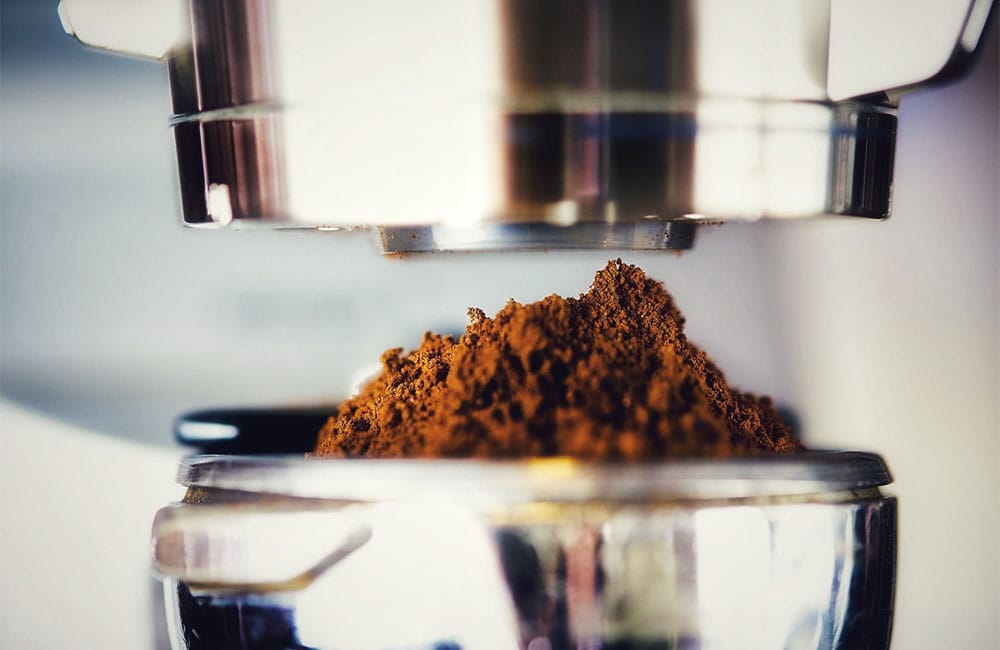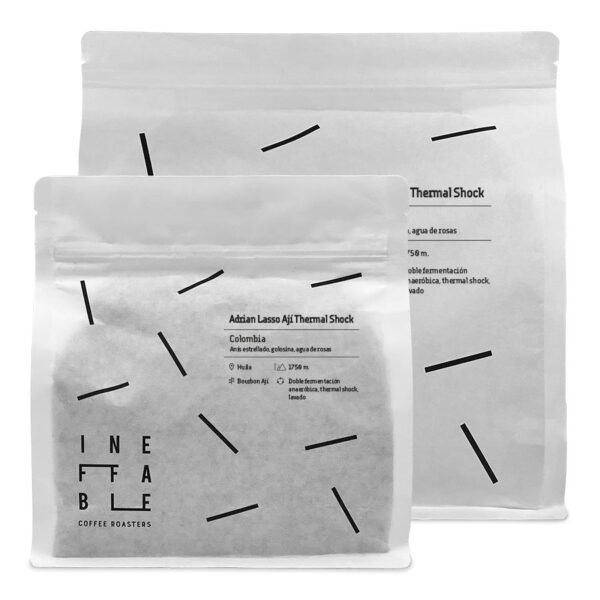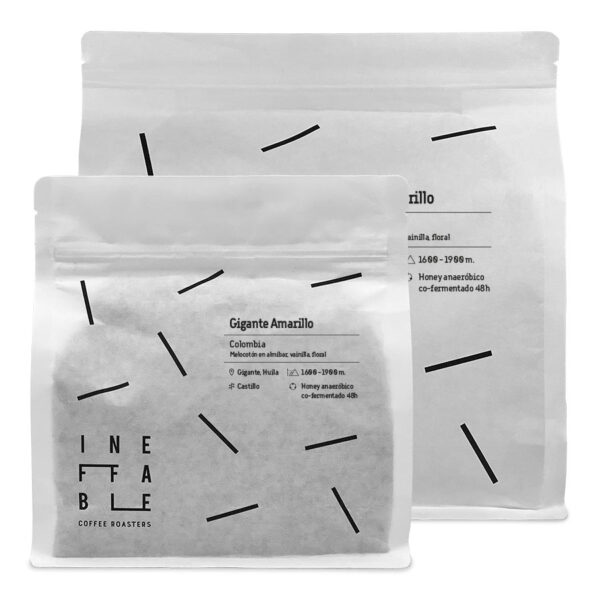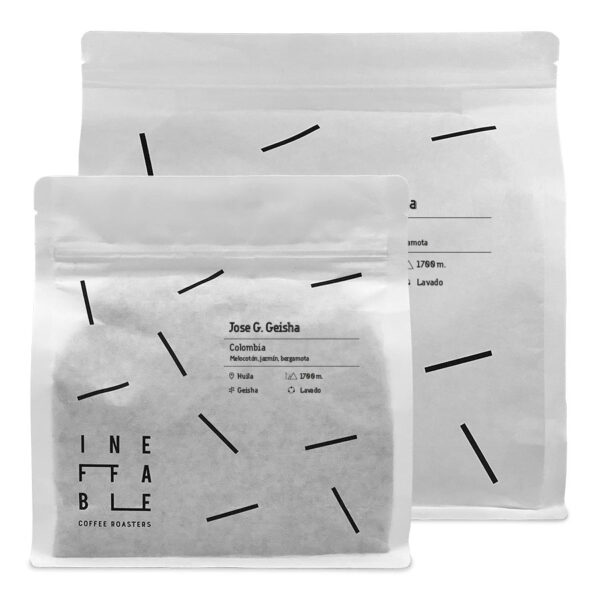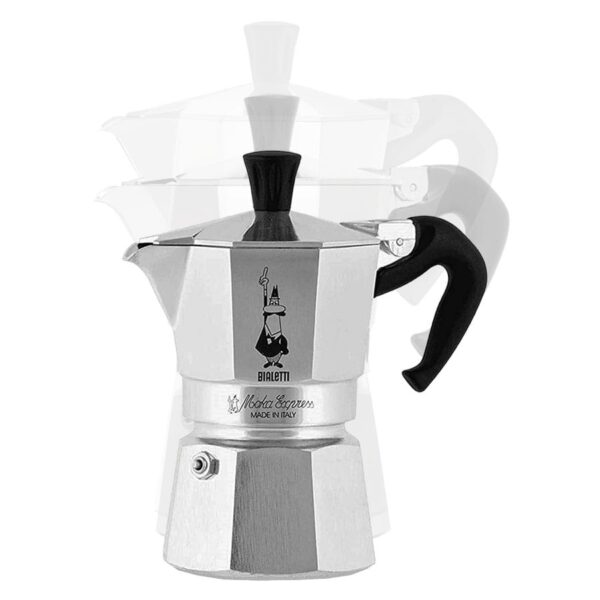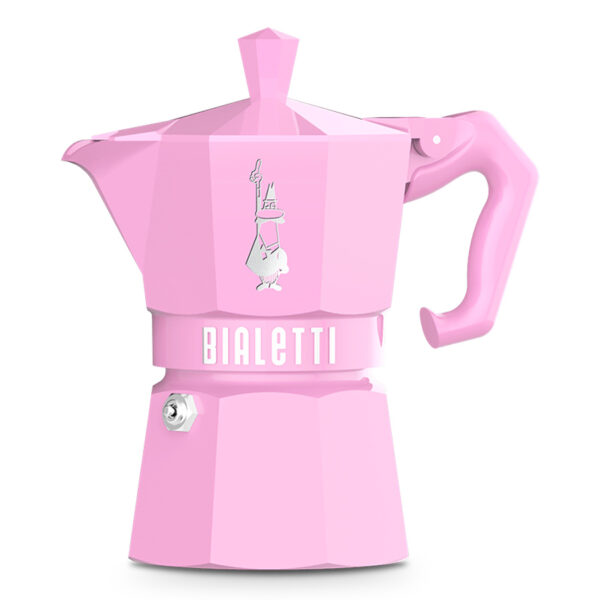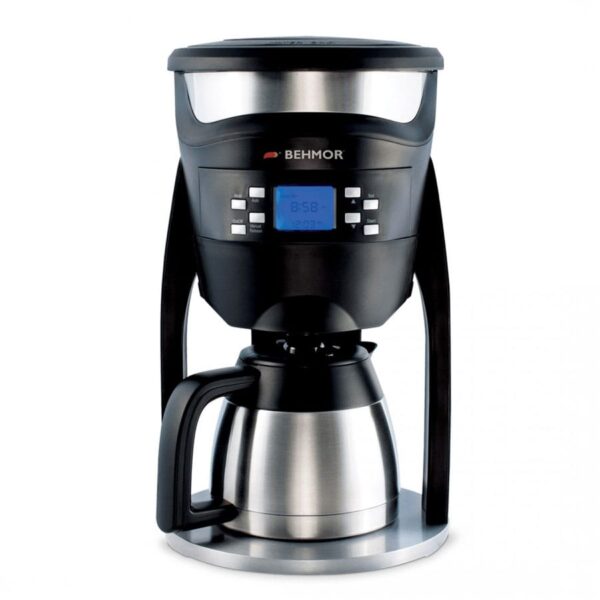Ground Coffee
He travelled along the Silk Road and one of the most precious goods that were traded along this route were spices: pepper from India, cinnamon from Ceylon or ginger from China. Spices and coffee share a common history, that of intercontinental trade.
But also something else, if you grind them before using them, they lose properties. That is why ground coffee was not suitable to be transported from one place to another then and is still not suitable now.
And that’s what this post is about: why it is better to grind the coffee beans just before we are going to brew them and how to do it to keep all its properties and brew them correctly.

That is, it is a grain-shaped seed like many others. But when grinding them and brewing them with water, we obtain a drink that has very particular organoleptic qualities.
All stages of the coffee process are important.
The coffee grower who chooses a particular land and location to plant, the type of coffee plant chosen, the way they are grown and harvested, how are they dried, transported, roasted and packed, all leave a mark on the coffee seeds.
But once it’s about to be brewed, the coffee must be ground. How we grind it, which tools we use, with what size and when, is a very important part of this whole process, but one that many people do not pay enough attention to.
When we talk about ground coffee, we are speaking about why it is important to keep the coffee beans whole until the last moment, what tools to use when grinding them, what size should the ground coffee have, how to preserve it and prepare it.
All this is to make sure that we do justice to the work of so many people before us and above all, that we enjoy each cup of coffee to the fullest.
Why is it important to keep coffee beans ungrounded until brewing them?
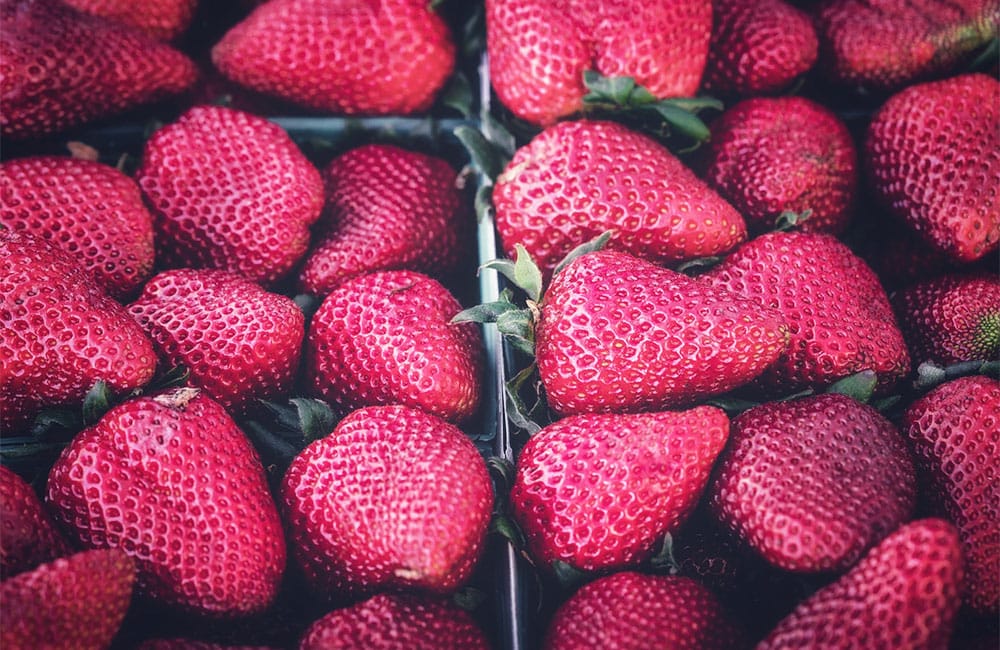
Oxidation, at the molecular level, happens because oxygen molecules steal electrons from other molecules and the molecules that lose them become unstable and reactive. This causes the molecular composition of the organic compound to change, in this case, coffee. And, therefore, their organoleptic properties also change.
These qualities are given by factors as diverse as the place of origin, the altitude, the climate, the type of plant, the type of drying, washing and roasting. At each of these stages, everyone involved has ensured that all processes highlight the unique qualities of each bean. If we grind the coffee well in advance brewing it, we will be having the opposite effect, we will be damaging those qualities.
That is because when we grind the coffee, we are expanding the surface of the coffee molecules that are in contact with oxygen and, therefore, accelerating the oxidation process.
Although it is necessary to ground the coffee before brewing for a correct extraction since it is the only way in which the solubles dissolve, the best time to grind it is just before brewing.
Theory of extraction
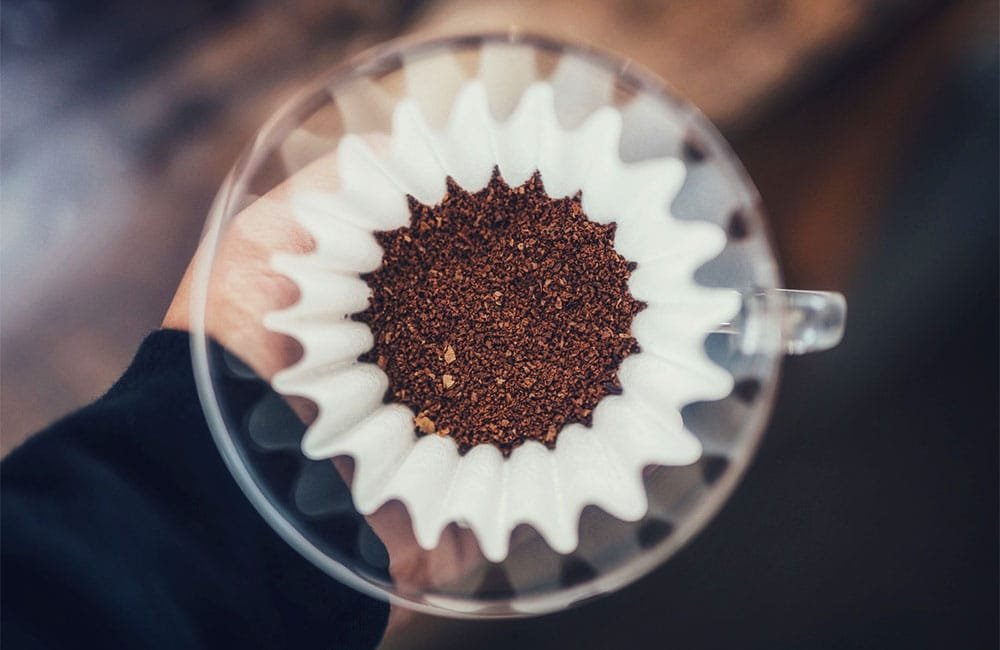
The theory of extraction refers to how we extract the coffee solubles when they come into contact with water and to the amount of solubles that are dissolved once we have finished. As Ted Lingle says in The Coffee Brewing Handbook:
“The extraction is a measure of the amount of soluble in the final drink. It is also expressed as a percentage, comparing the amount of coffee solid material in the beverage with the amount of ground coffee used to prepare it. Approximately 28% of the organic and inorganic matter contained in roasted coffee beans will easily dissolve in water. The remaining 72% is fibre cellulose from the seed, which is not soluble in water under normal processing conditions ”.
When we talk about extraction theory, we refer to the extraction percentages, which are related to the method we use to carry out the extraction -filter, espresso, immersion-, in relation to the number of soluble substances dissolved in the final drink.
This is important because, depending on the method, we will need a grinding size or another to achieve the desired extraction percentages.
TDS measurement
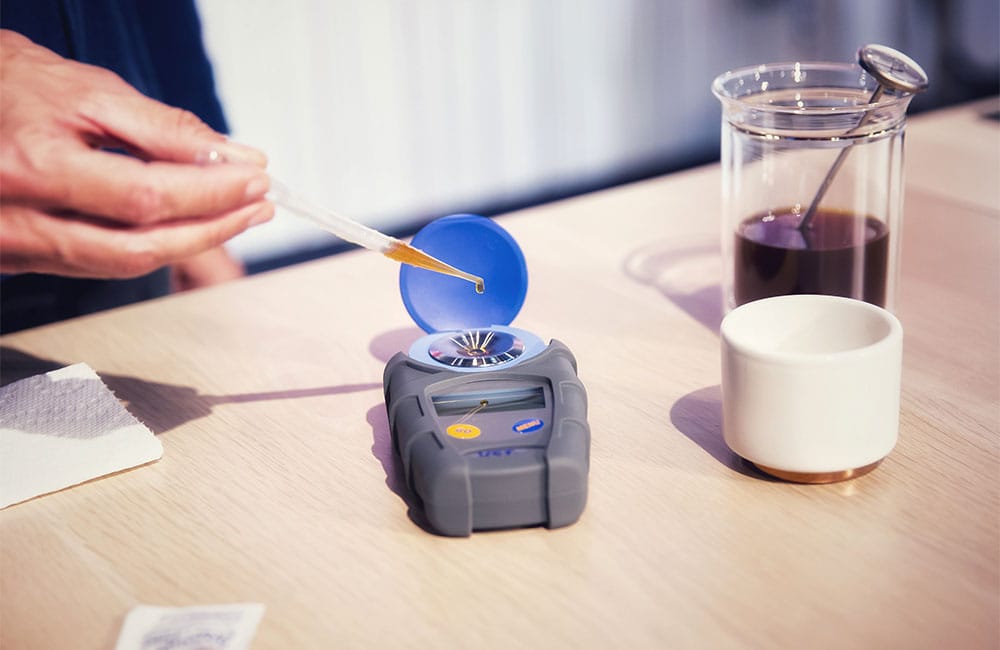
So, on the one hand, we have the percentage of potential soluble substances that can be extracted from a coffee (which maximum is 28% of each bean) and on the other, we have the total percentage of dissolved solids in each cup of coffee, which varies depending on the method used, the desired drink and the technique and precision of the barista.
The percentage of dissolved solubles in a coffee that professionals work with, have discussed and experimented with so far is between 18% and 22% of the possible total (28%).
Although this has been recently changing with new advances, better-developed coffee roasts and using more controlled forms of extraction. The percentages have been pushed above 22% with very positive results. We could say that the coffee vanguard now moves from 18% to 27% with excellent results.
- Filtered: 1.2% – 1.6% (TDS)
- Americano, long black: 2% – 5% (TDS) (depends on the amount of water added)
- Lungo: 5% – 7% (not a common drink) (TDS)
- Espresso: 7% – 10% (TDS)
- Ristretto: 10% – 12% (TDS)
For a cup of coffee to be balanced and to show all its qualities, between 18% and 22% of all the solubles must have been dissolved and this must represent a percentage of between 1.2% and 12% of the total solids in each cup.
If these percentages are above or below the average, we will have a cup that may be under or over-extracted. Both results are not advisable, since in the first the coffee will not have all the possible aromas and flavours and in the second we will have extracted too much and the bitter and other undesirable notes will hide the desirable tasting notes.
Enjoy seasonal coffee, visit our shop
Grind size
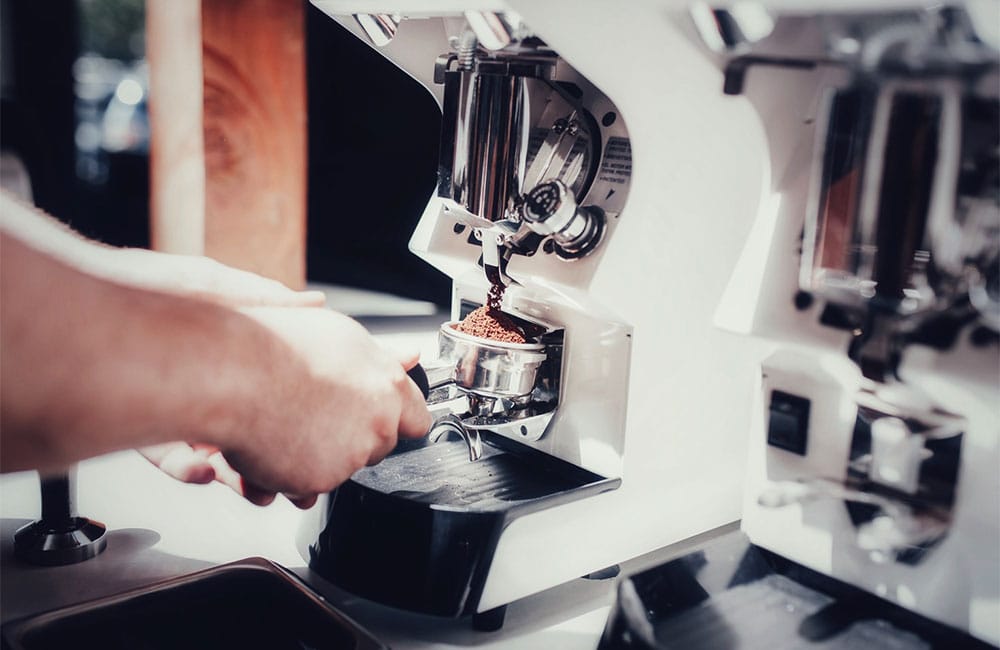
To obtain a correct extraction, and we have already defined what we mean by this, one of the most important elements is that the size of the coffee grind is in accordance with the method that we are going to use so that the extraction occurs within the percentages that we have mentioned.
Let’s say there are three general ways to brew coffee: Immersion (French Press) percolating/filter (AeroPress, V60, Kalita, etc.), and espresso.
- Espresso: very fine grind (almost like flour)
- Mokka: fine grind (as fine salt)
- Aeropress: medium grind (slightly coarser than fine salt)
- V60: medium grind (slightly coarser than fine salt)
- Chemex: medium grind (slightly coarser than fine salt)
- Plunger: coarse grind (like coarse salt)
And we’ll just briefly mention the coffee/water ratio: most brew ratios for immersion and percolating/filter are between 1:10 and 1:18. With the notable exception of espresso, which is between 1:1 and 1:3 due to faster and more efficient extraction.
This ratio means that for each gram of coffee we would use between 10 and 18 grams of water for immersion and percolating/filter and with the espresso method, for each gram of coffee we would obtain between 1 and 3 grams of drink in a cup.
Get to know our accessories and visit our shop
Grind distribution
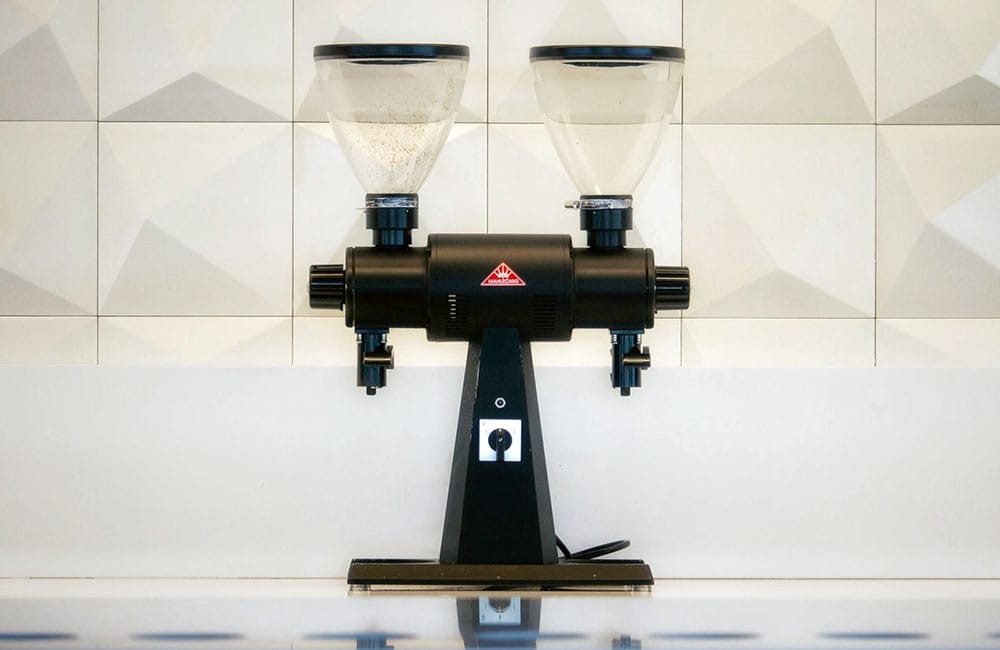
The unit we use to measure coffee particles is microns. When grinding coffee, a grinder will give us particles of many different sizes: from particles of one micron to others of one thousand five hundred microns. Although we will generally divide them into those that are below 100 microns, those that are about 400 microns in size and those that are about 800 microns.
This is important because when carrying out the extraction what we are looking for is that the ground coffee is as homogeneous as possible, that is, that all the particles are within a small margin.
If this is not the case, if there are particles that are very different in size, the extraction will not be uniform and the result can be an over-extracted and under-extracted cup at the same time (large particles have not dissolved all the solids they should and small ones have dissolved more than they should).
Synthesis of the grinding theory
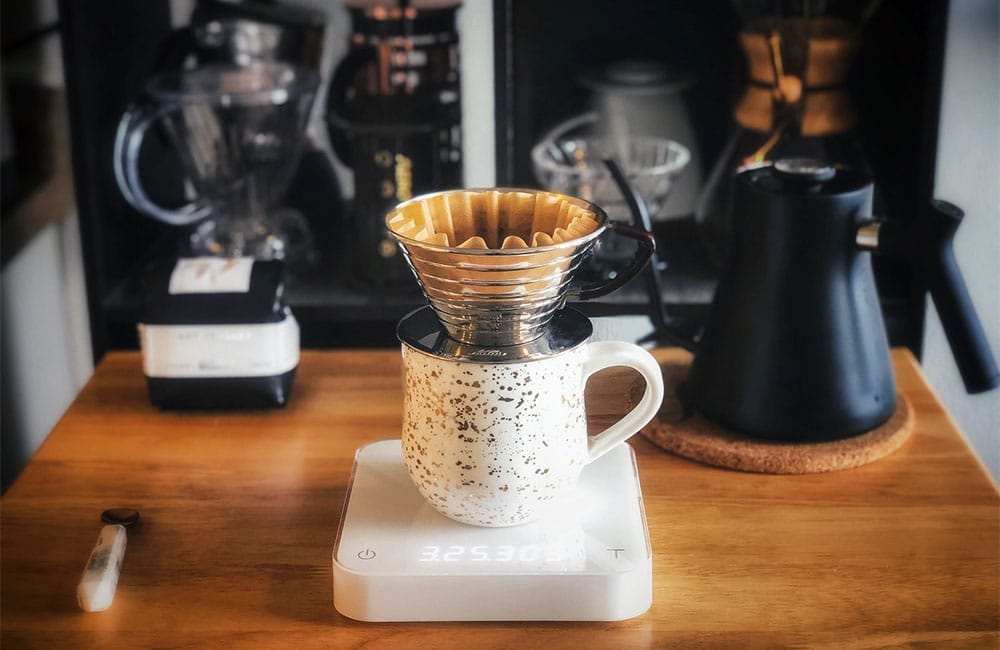
A finer grind results in a slower water flow which results in a longer contact time between water and coffee and therefore a higher extraction.
Conversely:
A coarser grind results in a faster water flow resulting in shorter water-coffee contact time and therefore less extraction.
And:
For the immersion methods, we will use a coarse grind, for the percolating/filtering finer and very fine for the espresso.
How to grind coffee
The answer is simple, but with several possibilities. Obviously, we will need a grinder if we want to grind it at home. The coffee grinders can be manual or electric.
We recommend using manual grinders at home (unless you want and can spend several hundred euros on a professional electric coffee grinder). That is because commercial electric blade grinders do not grind the coffee, but smash it and also heat it (due to the friction of the blades and the motor).
Most low-end electric grinders will give us a very wide grinding distribution margin, which is not recommended.
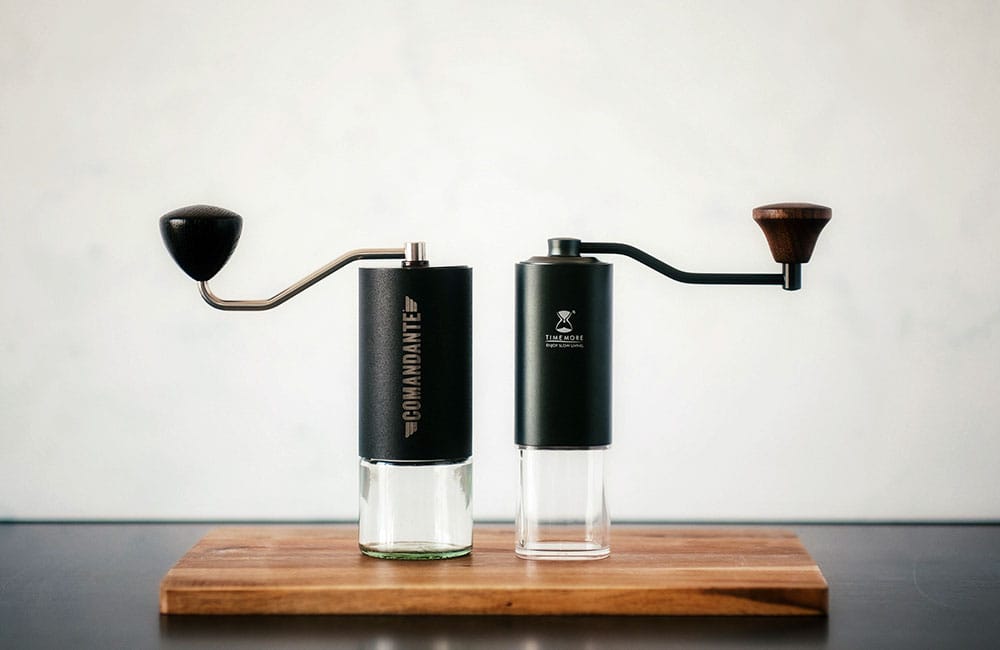
In our shop, you may find several models with different prices. The Comandante manual coffee grinder is one of those we highly recommend. And this HARIO Mini Mill is also very good if your budget is not so bulky.
Lastly, if you don’t have a grinder yet, you can buy your coffee beans and ask your local coffee shop to grind them. It is not our recommended method, but if you preserve it well and consume it in a short period, it should not lose too many properties.
How to preserve ground coffee
If you are going to buy coffee and you don’t have a grinder, then ask to have it ground according to the brewing method and technique you are going to use. Ask for it to be packed in a bag that can be vacuum sealed and has a one-way valve (the bags in which good coffee beans are packed are usually like this).
Once at home, store it away from sunlight and strong odours and in an airtight container. Lastly, consume it within a week or ten days.
By following these simple instructions, you can continue to enjoy your coffee, even if it has been ground for a while.
How to prepare ground coffee
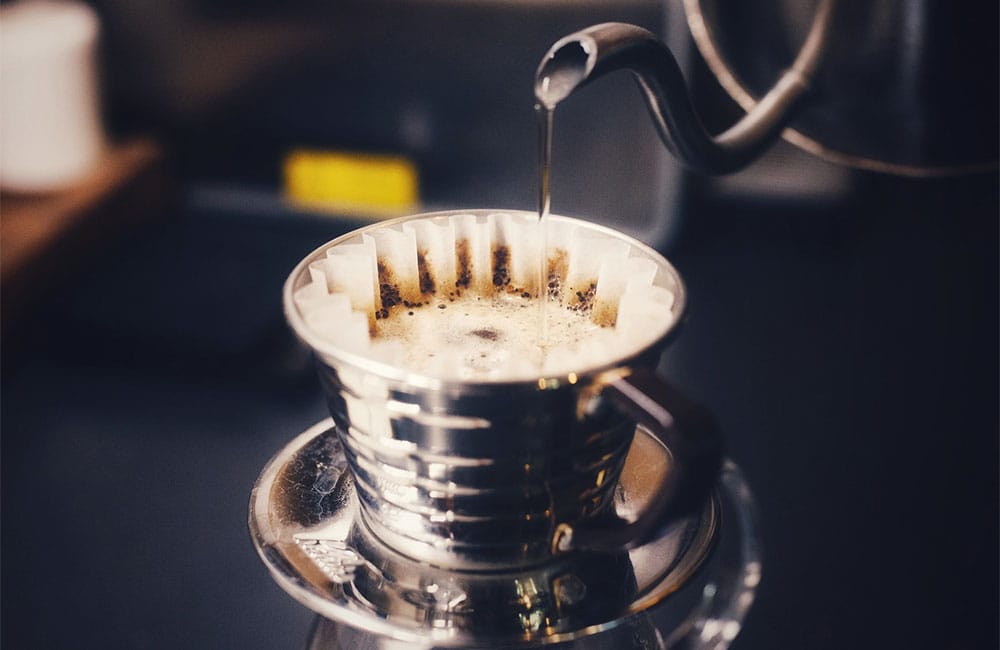
Each method has several techniques. The most popular immersion method is the French press, but so are the AeroPress, the siphon, the Clever, and cupping. In the filter methods, we find the V60, the Chemex and the Kalita, but also the electric drip coffee machines such as the Behmor Brazen coffee machine. And the espresso method is essentially based on an espresso machine.
Regardless of the method and technique, the main idea is the same: that the water is in contact with the ground coffee for a time and in a particular ratio (we have talked about both before).
How to make ground coffee without a coffee maker
A very common way of doing this which we recommend for summer is the Cold Brew, or cold extraction. For that, you will not need a coffee maker, but you will need a container and gauze. If you are interested, in this post we explain how to do it step by step.
Another way is to do it the old-fashioned way, pot-coffee, and although a bit rudimentary, it can get us out of trouble. It is quite straightforward and resembles an immersion method. We need the coffee to be coarsely ground and an amount of water that gives us a ratio/proportion of about 15 grams of water for each gram of coffee. Apart from this, a pot and a strainer (if we have one).
To do this we bring the water to a boil, turn it off and wait about two minutes. Then we add the coffee and stir carefully. We wait about 4 minutes and we serve it with a strainer, or we decant it. You will be able to enjoy an acceptable coffee without a coffee maker.
What is the best ground coffee and where to buy it?
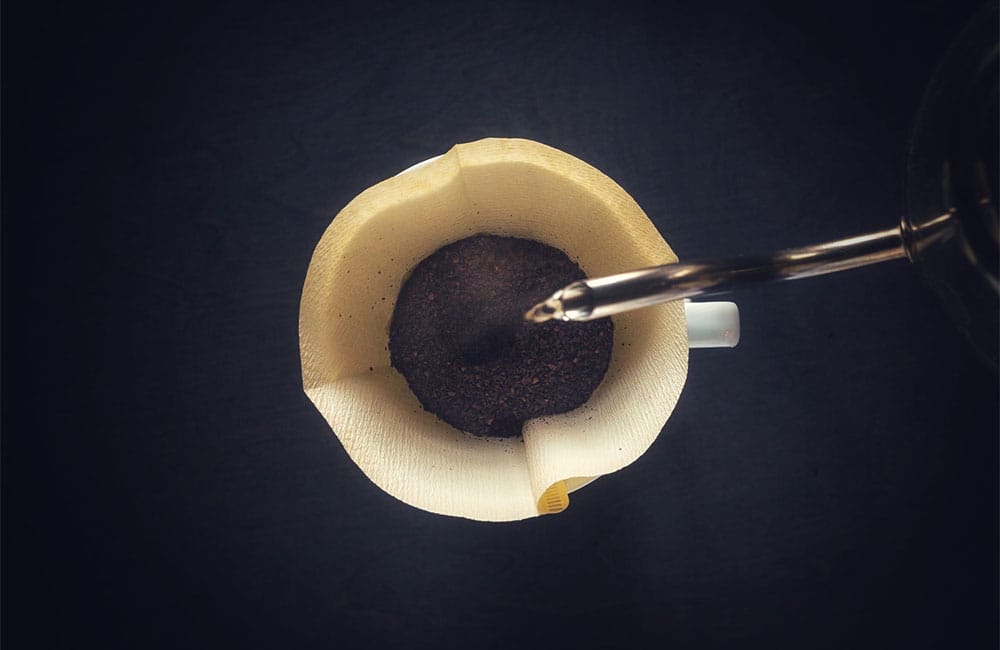
This implies that the coffee is fresh, in season and recently roasted. If we want a coffee in optimal conditions, we must consume it within twelve weeks after being roasted, if it has been preserved correctly.
The type of roast, whether it is a lighter or darker roast, will depend on our tastes and preferences. But we shouldn’t buy a coffee that is too roasted or burnt since we will be losing organoleptic qualities.
You can buy ground and whole coffee in our store or go to your favourite specialty coffee shop.
Ground coffee vs coffee beans
We have discussed the theory of extraction and the size and distribution of grinding particles. In this regard, to achieve extraction percentages (between 18% and 22%) and TDS (between 1.2% and 12% depending on the method), the grinding must be adjusted to the brewing method as homogeneous as possible. The water/coffee ratio is also important.
For correct grinding, we recommend using a manual coffee grinder at home. And only in situations in which we have no other alternative, buy it whole and ask for it to be ground.
In all cases, but especially if the coffee is ground, conservation is very important. We should ensure that it is in bags with hermetic and vacuum closure and with a one-way valve.
And when preparing it, the size of the grind will depend on the method that we are going to use. But generally speaking: a coarse grind for immersion methods, fine for percolating/filter and very fine for espresso.
All this so that we can enjoy our coffee to the fullest and do justice to the work of all those who have worked hard to ensure that each coffee bean reaches us in optimal conditions.
Now that you know all this … you just have to choose which coffee you would like to taste.

